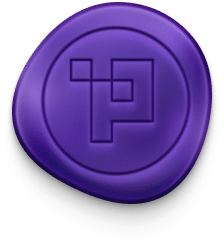Understanding the Impact of Web Vitals on Your Website

In the fast-paced world of the web, performance is everything. A split second delay can mean the difference between gaining a loyal customer or losing them to your competition. Enter Core Web Vitals—Google’s way of measuring the real-world user experience on your website. These vitals focus on three critical performance aspects: loading, interactivity, and visual stability.
So, what exactly are Core Web Vitals, and why are they so important for your website’s performance? Let’s dive in.
Core Web Vitals Overview: The Essentials for Performance
Core Web Vitals are metrics that Google uses to gauge the overall health of your website’s user experience. While there are many performance indicators, Google zeroes in on three primary factors:
- Largest Contentful Paint (LCP): Measures loading performance. Specifically, how long it takes for the largest piece of content (like an image or block of text) to render on the user’s screen.
- First Input Delay (FID): Evaluates interactivity. This metric tracks the time it takes for a page to respond to a user’s first interaction, such as clicking a button or a link.
- Cumulative Layout Shift (CLS): Assesses visual stability. CLS measures how much the layout shifts unexpectedly while a page is loading, which can lead to user frustration.
Why do these metrics matter? Well, they directly impact user experience. If your page loads too slowly (poor LCP), is unresponsive to clicks (high FID), or has shifting elements (bad CLS), you’re likely to see higher bounce rates and fewer conversions.
Measuring Web Vitals: Tools of the Trade
Luckily, measuring Core Web Vitals isn’t complicated, and you don’t need to be a tech wizard to get started. Google offers a range of tools to help you evaluate these metrics:
- Google PageSpeed Insights: Provides detailed insights into your page’s Core Web Vitals, complete with suggestions for improvement.
- Lighthouse: This is a developer tool that not only measures Core Web Vitals but also gives you actionable feedback on how to improve them.
- Chrome User Experience Report (CrUX): This report gathers real-world performance data from Chrome users to give you an idea of how your website performs in the wild.
- Web Vitals Extension: A Chrome extension that shows your Core Web Vitals data in real-time as you browse your site.
With these tools, you can monitor the health of your website’s performance and catch any issues before they start costing you users.
Improving Largest Contentful Paint (LCP)
LCP measures how fast the main content on your page loads, and improving it can make a huge difference in user experience. Here are some strategies to help optimise LCP:
- Optimise Server Response Times: If your server is slow to respond, everything else will be slow too. Reduce server response times by using a faster hosting provider, optimising your database queries, and using a Content Delivery Network (CDN).
- Defer Non-Critical Resources: Loading too many scripts, styles, or images can delay the rendering of important content. Defer the loading of any non-essential resources until after the main content has loaded.
- Optimise and Compress Images: Large images are often the biggest contributors to poor LCP. Use responsive images, modern formats like WebP, and compress your images to reduce their file size without sacrificing quality.
- Use Lazy Loading: Lazy loading allows you to defer loading images and other non-critical elements until they are needed, improving initial load times.
Optimising First Input Delay (FID) and Cumulative Layout Shift (CLS)
While LCP focuses on loading speed, FID and CLS ensure that your site remains responsive and visually stable as users interact with it. Here’s how you can improve both metrics:
Reducing First Input Delay (FID)
A poor FID score often stems from heavy JavaScript execution blocking the main thread. Here’s how to reduce it:
- Minimise JavaScript: Keep JavaScript to a minimum and defer or asynchronously load scripts that are not needed right away.
- Use Web Workers: Offload heavy computations to web workers so that the main thread remains free for user interactions.
- Reduce Third-Party Scripts: Third-party scripts like ads, social media buttons, and tracking codes can introduce significant delays. Audit and remove any unnecessary ones.
Reducing Cumulative Layout Shift (CLS)
Unexpected layout shifts can be incredibly frustrating for users, especially when it causes them to click the wrong button or lose their place on the page. To reduce CLS:
- Set Size Attributes for Media: Always specify width and height attributes for images and videos, so the browser can allocate the appropriate space during loading.
- Avoid Inserting Content Above Existing Content: New content that loads dynamically should not push existing content down the page. Instead, load it in a predefined space or after user interaction.
- Use Font-Display: Swap: Ensure that custom fonts load quickly by using the font-display: swap CSS property, which prevents invisible text from causing layout shifts.
Supercharge Your Users Experience with Web Vitals
Core Web Vitals are more than just performance metrics—they are essential to the user experience. By improving your LCP, FID, and CLS scores, you’re not just appeasing Google; you’re ensuring that your users have a smooth, responsive, and visually stable journey on your site.
And as Google continues to prioritise user experience in its rankings, optimising for Core Web Vitals is no longer optional—it’s a necessity. Are you ready to ensure your website not only meets but exceeds performance expectations? Dive into the world of Core Web Vitals, and start building a faster, more user-friendly website today.
Info
Posted: August 16, 2024
Reading Time:4 minutes
Author
Table Of Contents

